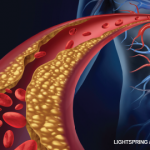Buprenorphine transdermal system (Butrans, Purdue) is available in a new strength, 7.5 mcg/hour.1 The buprenorphine transdermal system delivers seven days of buprenorphine as a partial opioid agonist in adults who have severe enough pain to require around-the-clock, long-term opioid treatment for which alternative treatment options are inadequate. Butrans is also available in 5 mcg/hour, 10 mcg/hour, 15 mcg/hour and 20 mcg/hour strengths.
Diclofenac sodium injection was approved by the Food and Drug Administration (FDA) at the end of December 2014.2 It’s indicated for managing moderate to severe pain as monotherapy or in combination with opioids.3 In two studies, injectable diclofenac significantly reduced the need for rescue medication (intravenous morphine) following elective abdominal or pelvic surgery, and elective orthopedic surgery compared to placebo-treated patients within the first 48 hours postoperatively. Diclofenac injection or placebo injection was given every six hours beginning within six hours of surgery and continued for up to five days. Efficacy was demonstrated by a reduction in pain intensity measured by the sum of the pain intensity differences over 0–48 hours in patients receiving injectable diclofenac vs. injected placebo. Common adverse reactions in clinical trials included constipation, flatulence, headache, infusion site pain, insomnia, nausea and vomiting. This agent will also carry a boxed warning (similar to other nonsteroidal antiinflammatory drugs [NSAIDs]) for serious cardiovascular events, which can be fatal, and gastrointestinal events including bleeding, ulceration and perforation. As with other diclofenac treatments, hepatic function effects may occur without a prodrome.4 Liver function test abnormalities may occur with injectable diclofenac. Patients should be appropriately monitored for renal and hepatic function while receiving diclofenac or other NSAIDs. Other warnings are similar to oral diclofenac.
Taking an angiotensin-converting enzyme inhibitor or an angiotensin receptor blocker along with trimethoprim-sulfamethoxazole is associated with an increased risk of sudden death.
Secukinumab (Cosentyx, Novartis), a subcutaneously administered interleukin-17A (IL-17A) inhibitor, was FDA approved in late January for the treatment of moderate to severe plaque psoriasis in adults who are candidates for systemic therapy or phototherapy.5 Results of a recent Phase 3b study showed secukinumab with superiority over ustekinumab, as well as meeting the primary endpoint of achieving a reduction in the Psoriasis Area Severity Index score of at least 90% (PASI 90) at Week 16.6 Secukinumab also met the secondary goal of achieving a PASI 75 response at Week 4. Approval of secukinumab was based on the results of four clinical trials in just over 2,400 patients. No new safety signals were identified. The most common reactions were diarrhea and upper respiratory infections. Serious allergic reactions have also occurred. A medication guide is part of the approved labeling for this new agent.
Drug Safety
Trimethoprim/sulfamethoxazole & hyperkalemia, a potentially serious drug interaction: A recent case-control study among older patients has shown that taking an angiotensin-converting enzyme inhibitor (ACEI) or an angiotensin receptor blocker (ARB) along with trimethoprim-sulfamethoxazole (SMX-TMP; co-trimoxazole) is associated with an increased risk of sudden death.7 Trimethoprim blocks the epithelial sodium channel in the distal nephron, reducing renal potassium elimination. Fralick et al note that up to 80% of patients receiving co-trimoxazole develop serum potassium increases of at least 0.36 mEq/L, with 6% of patients actually developing hyperkalemia (serum potassium >5.4 mEq/L). They also note, from past experience and case reports, the presence of severe hyperkalemia of an almost sevenfold increase for patients that use co-trimoxazole and renin-angiotensin system inhibitors. This reaction can occur rapidly and can be life threatening, especially in the outpatient setting, whereby sudden death potentially due to hyperkalemia could likely be attributed to heart disease when this might not be the case.


